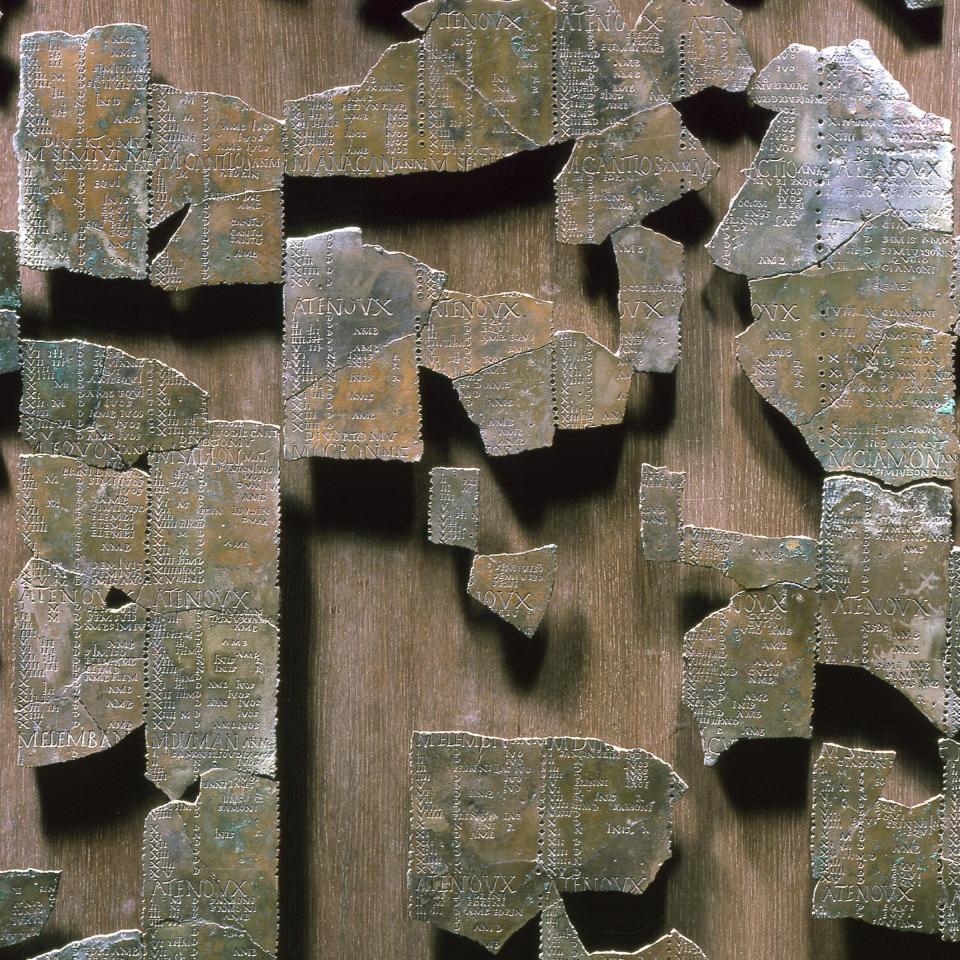Time in a Garden: Calendars tell stories
Calendars have always fascinated me.
For gardeners, they provide mile-markers for the rhythms of the seasons that can spell the difference between success and failure. So, when leap year rolled around — the extra day every four years, Feb. 29, that keeps our contemporary Gregorian calendar from going off the rails — I couldn’t help foraging back into some of the research that I did for "A Gardener’s Book of Days" back in 2021.

Calendars became an obsession in ancient agrarian societies: how to track solar and/or lunar cycles to determine when seasons would recur. On our trip to Provence last fall, we were excited to see the Coligny lunisolar calendar, a bronze plaque from Roman Gaul in the 2nd century CE. It is by no means the oldest calendar on record — that distinction belongs to the Warren Field calendar in Scotland from 10,000 BCE and an Aberdeenshire megalithic calendar from 8,000 BCE. But the Coligny fragments now in the Gallo-Roman Museum in Lyon are priceless because they include a treasure trove of Celtic-Gaelic vocabulary words found in no other written sources.

The 4th century CE Bulgar calendar from Central Asia is considered among the most accurate calendar system. Dating back to the 5th century BCE, the ancient Meso-American Mayan calendar used a complicated combination of long and short count calendars to keep track of solar and lunar cycles.
Our own Gregorian calendar adopted by decree of Pope Gregory XIII in 1582 (a revision of Imperial Rome’s Julian Calendar from 46 BCE) simplifies the math of solar tracking by periodically throwing in that extra "leap day." Although the Gregorian calendar is standard in much of the world today, some countries like China and some religious faiths such as Judaism and Christianity still maintain their own traditional calendar years as well.
At the moment, we are on the countdown to the spring equinox on March 20, an official dating of the season that was sacred to all kinds of ancient peoples, including the Romans who marked the date to celebrate the fertility goddess Cybele. Ancient peoples used symbols of new life and fertility like egg hunts and egg decorating to mark the holiday. The Green Man and Mother Earth are also symbols of spring's rebirth. Although bonfires are often associated with the winter solstice, the tradition is sometimes linked to the spring equinox as well.
On a practical note, technically we Northern Michigan gardeners can start to think about planting cold season crops like peas and lettuce and radishes. But for the more realistic among us, end of May to early June is safer for even thinking about digging in the dirt.
Without the calendar to ground us, the whole enterprise of gardening would seem random and even hopeless. I learned this the hard way years ago when we were living on Long Island. By Easter it seemed warm enough to go for it: which naively, I did. And the rains came. After everything rotted in the ground, I had to replant it all based not on wishful thinking, but on a careful study of recommendations for the local climate zone.
Bottom line, dates matter. Calendars interject a note of certainty into what is a less than certain world. We gardeners ignore them at our peril.
Author of the 2006 regional best-selling novel "Time in a Garden," Mary Agria has won six consecutive awards from Michigan Garden Clubs for feature writing since 2017. Her "An Itinerant Gardener's Book of Days," gardening novels and books on gardening and spirituality are available online and from local bookstores.
This article originally appeared on The Petoskey News-Review: Time in a Garden: Calendars tell stories

